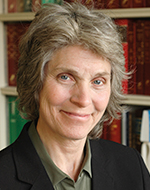Page Content
 The Alberta government boasts in every budget that, with its “Tax Advantage” program, Albertans pay the lowest taxes in Canada, and maybe even in North America. All personal and corporate incomes are taxed at a single 10 per cent rate — except for small businesses, which pay a low, three per cent rate.
The Alberta government boasts in every budget that, with its “Tax Advantage” program, Albertans pay the lowest taxes in Canada, and maybe even in North America. All personal and corporate incomes are taxed at a single 10 per cent rate — except for small businesses, which pay a low, three per cent rate.
Last year, looking forward to 2015, the province predicted that resource revenue would provide nearly $11 billion of the $32 billion it said it would spend in the upcoming year. The government also reminded Albertans that they would have paid $1 billion more in personal and corporate income taxes if they had lived anywhere else in Canada.
This year, Alberta is starting to look at ways to find more tax revenue. It may not need $11 billion more from taxpayers, but it is looking for more stable sources of revenue to offset shortfalls due to the fall in oil prices.
Ironically, until 2001, Alberta had plenty of tax revenue. If the government had not decided that it wanted to win the race to the bottom of the tax heap, it would have had at least $6 billion more from the personal, corporate and health premium taxes it had decided must be cut. Having sold Albertans on the importance of low taxes for jobs, prosperity and wealth, the government must now convince taxpayers that it needs to increase taxes.
If Alberta cares about tax fairness, it will first increase personal income tax rates for those with the highest incomes. And it will reject sales taxes as an option.
Fifteen years ago, when Alberta replaced its old 7.5 per cent low personal income tax rate with its single 10 per cent rate, low-income taxpayers faced a tax increase of 2.5 percentage points. At the same time, all those with medium and high incomes got cuts of up to 2.8 percentage points. In a very real sense, low and modest income taxpayers have borne more than their fair share of tax revenue with the 10 per cent single rate. And with the lowest rates of social assistance, regulated child care and social programs in the country, they have had little to show for it.
During this time, Alberta has had the decency to not impose sales taxes on those lower income taxpayers. It should continue to hold to that position.
New graduated personal income tax rates of 13, 15 and 16 per cent would raise $1.6 billion from the richest half of the population, while leaving the lowest income half at its current 10 per cent rate.
If more personal tax revenue were needed, these rates could be scaled up and supplemented in the short term. Alberta’s lowest tax rate of 10 per cent would still be the third highest in the country, but it would be taking a fairer share of additional revenue from those who can afford it.
In contrast, if the province opted for a 2.5 per cent sales tax, even with a low-income tax credit like that in Saskatchewan, all taxpayers would face new taxes — even those with the lowest incomes. In effect, Alberta’s 10 per cent single rate would become a 12.5 per cent single tax rate for everyone. Not only would this be inequitable to those with low and modest incomes, but it would also give higher income taxpayers yet another tax benefit — savings and investments are exempt from sales taxes.
This sales tax exemption for savings and investments would only benefit those with the highest incomes (approximately the richest 15 per cent) because most Canadians spend their entire incomes on living expenses, and have little savings and investment capacity beyond workplace pension and government CPP contributions. Only those with the highest incomes can invest more. Thus, significant numbers of high income earners will escape sales taxation, while the other 85 per cent will effectively pay sales taxes on most of their incomes.
It is high time for the Alberta government to go back into the business of raising tax revenue to reduce reliance on volatile resource revenue. But it should begin by taking quite seriously the fundamental principle of taxing people according to their ability to pay. It has ignored that principle for far too long. ❚
Kathleen Lahey is a professor of tax law at Queen’s University and the author of the Parkland Institute report The Alberta Disadvantage: Gender, Taxation, and Income Inequality.
